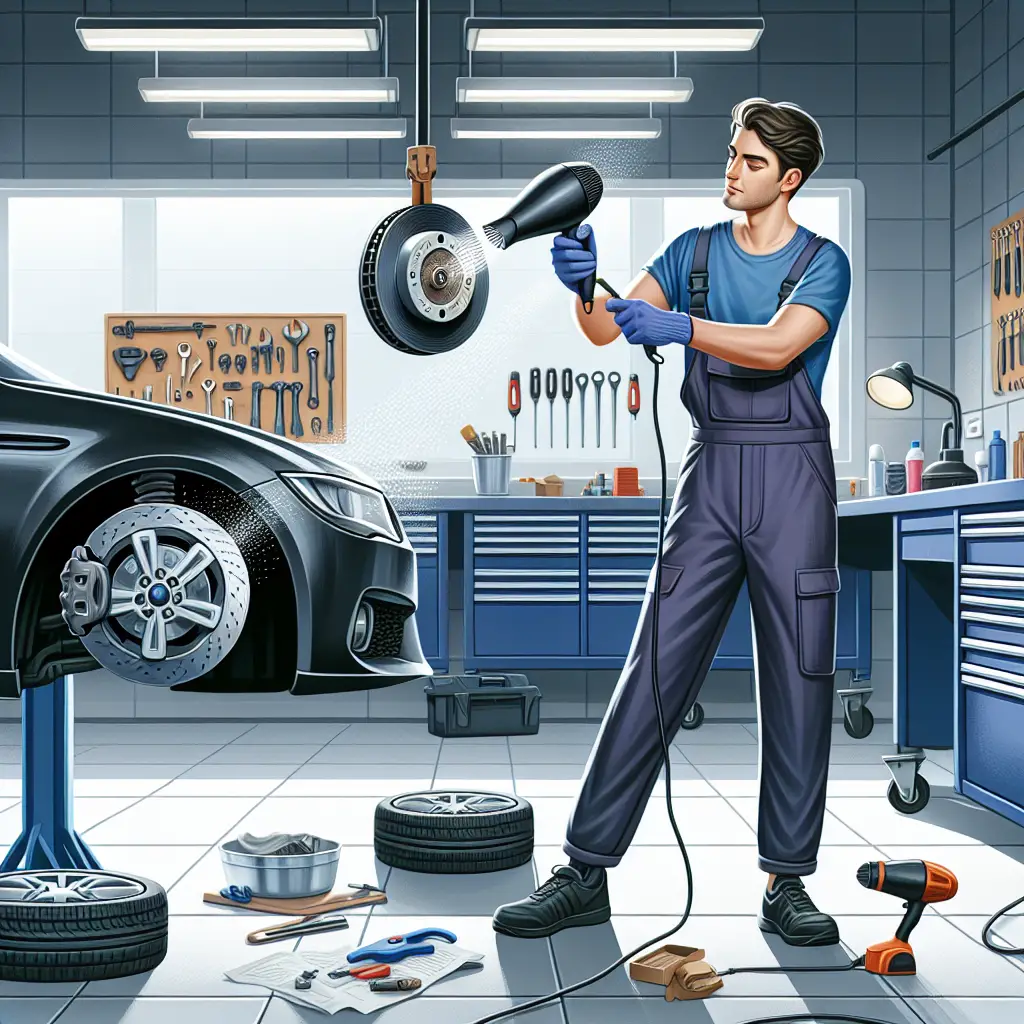How to Dry Your Car Brakes: Expert Tips for Optimal Performance
Driving through rain or deep puddles can bring about an unexpected issue for many motorists: wet brakes. When your car brakes are wet, they can become less responsive – a disconcerting sensation that could potentially lead to reduced braking efficiency or even failure in extreme cases. Fortunately, there are several steps you can take to dry your car brakes effectively, ensuring you maintain optimal performance and safety on the road.
Why It’s Crucial to Keep Your Brakes Dry
Before we delve into the how-to, let’s explore why drying your car brakes is crucial. Water can act as a lubricant, diminishing friction between your brake pads and rotors or drums. This leads to decreased stopping power, known as brake fade. Additionally, if water finds its way into brake components and freezes, it can cause brakes to stick or fail entirely. Therefore, keeping your brakes dry isn’t just about immediate safety, it also contributes to the longevity of your braking system.
Methods to Dry Your Car Brakes
1. The Gentle Braking Technique
Possibly the simplest method of drying your brakes is to use them gently but consistently after you’ve driven through water. The friction created by the brake pads against the rotors or drums generates heat, which can evaporate the moisture. Upon exiting a waterlogged area, lightly apply your brakes several times. This helps to warm them up and dissipate the water.
2. Increase Driving Time
After a heavy downpour or a drive through a puddle, it’s a good idea to keep on driving for a bit longer if conditions allow. Extended driving time without exposure to more water gives your brakes the opportunity to air-dry. Even when not actively braking, the rotation of your wheels will enable the air to flow through and around the brake components, aiding the drying process Consumer Reports explains the importance of air flow in vehicle maintenance, including brake systems.
3. Avoid Deep Water
Prevention is always better than cure. While sometimes it’s unavoidable, try to skirt around deep puddles or flooded areas when possible. If you must drive through water, do so slowly to prevent water from splashing up into the brake components.
4. Regular Maintenance Checks
Make sure you’re up to date with your regular vehicle maintenance. A mechanic should check for any issues that could exacerbate wet brakes, such as worn pads or a compromised braking system. For helpful tips on routine brake maintenance, websites like Car and Driver offer comprehensive guides and insights.
5. Be Cautious in Wet Conditions
Lastly, always exercise additional caution when driving in wet conditions. Besides drying your brakes proactively by applying them gently, it’s wise to maintain a greater following distance and reduce your speed to ensure that, even if your brakes are slightly compromised, you have enough space to stop safely.
Drying Brakes After Washing Your Car
What about after you wash your car? Water can become entrapped in the brakes, especially when using high-pressure hoses. The techniques mentioned above still apply, but there’s a bit more you can do.
After washing, drive your car slowly and apply the brakes multiple times to generate heat and facilitate drying. If possible, avoid washing your brakes with direct streams of water unless you’re prepared to dry them immediately afterward.
Benefits of Properly Dried Brakes
Drying your brakes correctly has numerous benefits, including:
- Improved braking performance: Dry brakes respond better and stop your vehicle more efficiently.
- Reduced risk of brake fade: Keeping brakes dry mitigates the risk of diminished braking capability due to water-induced lubrication.
- Prevention of corrosion: Regularly drying your brakes helps prevent rust and corrosion, which water exposure can quicken.
- Enhanced safety: Ultimately, dry brakes contribute significantly to overall driving safety, particularly in adverse conditions.
When to Seek Professional Help
If your brakes are routinely getting wet without obvious cause, or if they’re showing signs of impaired performance after exposure to water, it may be time to get a professional opinion. Regularly drying your brakes can’t fix a mechanical problem. In the event of any noticeable changes in your braking system’s behavior, schedule an inspection with a trusted mechanic without delay. For diagnosis and repair services, check out the resources offered by ASE, an organization committed to advancing the quality of vehicle repair and service by testing and certifying automotive professionals.
In Conclusion
Wet brakes can threaten your car’s performance and safety, but by following the expert tips provided, you can ensure your brakes dry efficiently and function optimally. It’s all about gentle, consistent braking, preventing excessive water exposure, regular maintenance, and being cautious in wet conditions.
Remember to keep an eye – and an ear – on your brakes, especially after they’ve been wet. If something seems off, it’s better to be safe and have them checked out. Drive safely, and maintain your vehicle to avoid potential mishaps or accidents due to brake issues. Whether it’s a stormy day or you’ve just finished washing your car, these techniques will help keep your brakes in top shape.
Your safety on the road is paramount, and it often starts with a set of well-maintained, dry brakes. Don’t overlook this critical aspect of car maintenance – it’s a small act that can make a big difference.

